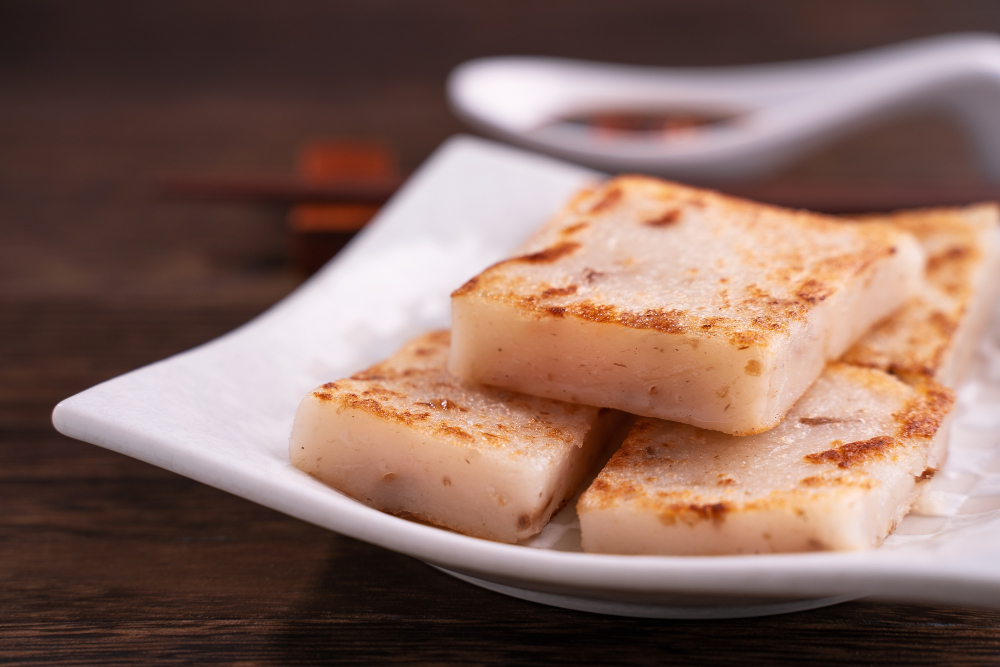
Beyond Leche Flan, Cassava Cake, Maja Blanca, and Buko Pandan
Familiar desserts like leche flan, maja blanca, and buko pandan have long been staples in Filipino celebrations.
Their popularity is well-earned, but they represent just a fraction of what many Filipino sweets can be. Mindanao offers an entirely different approach—one that reflects the region’s agricultural abundance, cultural diversity, and distinct flavour profiles.
Here, desserts often lean into earthier textures, deeper sweetness, and unique ingredient combinations.
Many are made with tubers, native starches, and coconut-based components or coconut milk, offering a different take on what defines a “popular Filipino dessert.”
Mindanao’s Sweet Contributions to Filipino Cuisine
Rooted in indigenous practices and enriched by Muslim traditions
Mindanao’s role in shaping Filipino cuisine is often underrepresented, yet its culinary landscape, particularly its desserts, offers a depth that deserves wider recognition.
Rooted in indigenous practices and enriched by Muslim traditions and centuries of cultural exchange, the region’s sweets reflect a strong connection to local ingredients and time-honoured preparation methods.
Many of these recipes have been passed down through generations, preserved not by commercial popularity but by cultural memory.
Despite their richness, these desserts rarely appear on national menus or in the broader Filipino food narrative. But to ignore them is to miss an essential piece of the Philippines’ diverse culinary story.
Below are ten standout desserts from Mindanao that reflect the region’s contribution to Filipino cuisine—each one with a story, a flavour, and a place at the table.
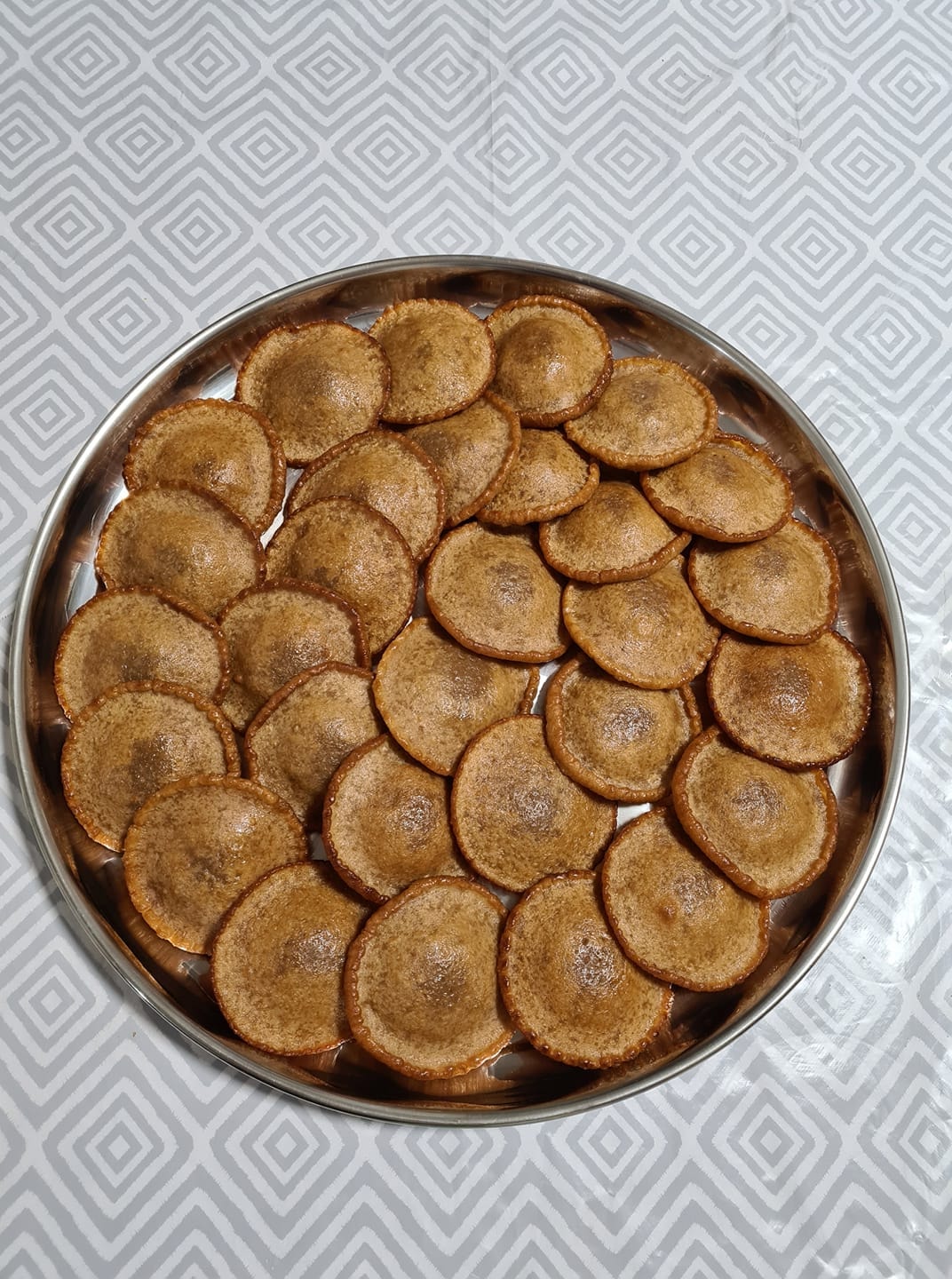
Image source: https://www.facebook.com/rynafoods
1. Panyalam
The Fried Coconut Rice Pancake
Panyalam (also called panyam) is a deep-fried Muslim-Mindanao treat often served at special occasions and festivals. Made from ground glutinous rice, brown sugar, and rich coconut milk, the batter is fried until it puffs into a thick, circular pancake with a bulging, chewy center.
The result is a doughnut-shaped rice cake that’s crisp at the edges and soft inside, golden brown and shiny from its light oil glaze. This rustic delicacy and very delicious food truly showcases Mindanao’s bounty of rice and coconut.
Traditionally, no baking powder or yeast is used – just three simple local ingredients yielding an absolutely delicious bite. The subtle sweetness of muscovado and the creamy coconut notes make it a treat many in the region can’t resist.
It’s a common merienda among Moro communities and a must-try dessert in Mindanao if you love kakanin.
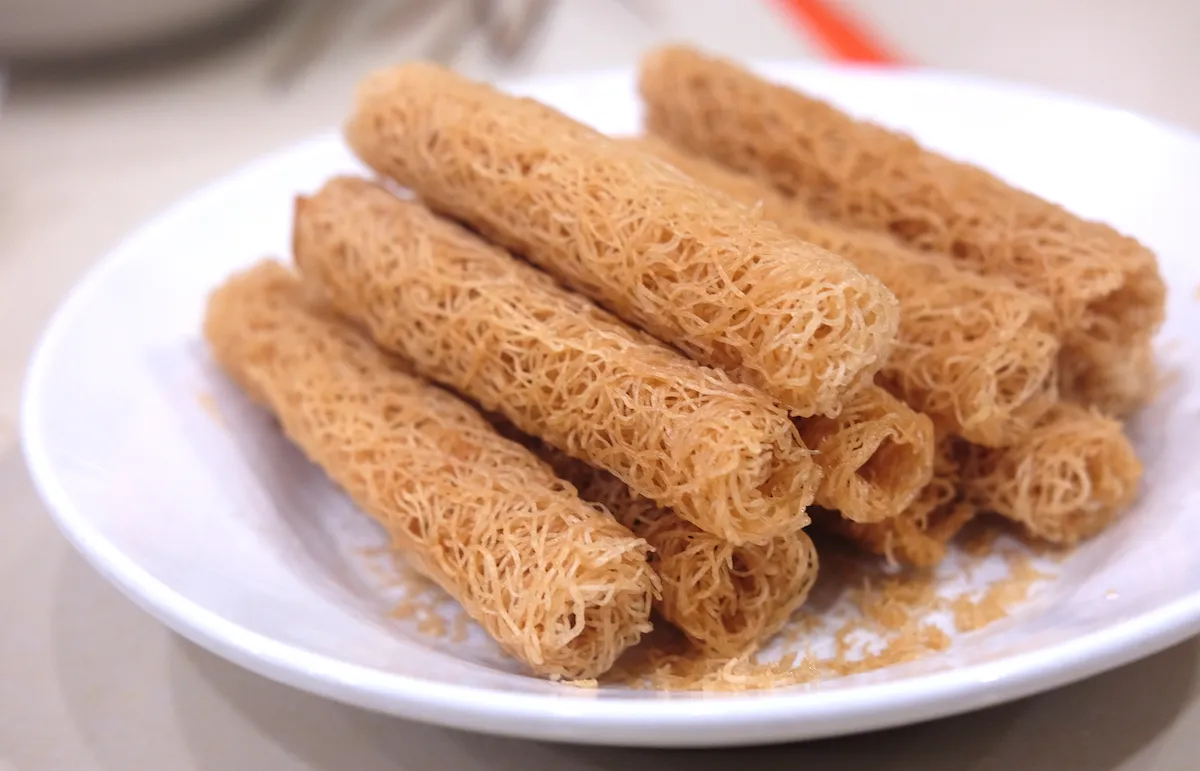
Image source: https://everydaylife647.wordpress.com/2017/10/03/how-to-make-lokot-lokot/
2. Lokot-Lokot
Crunchy “Noodle” Rolls of Jaa
Often sold alongside Panyalam is its quirky cousin, lokot-lokot – also known as tagaktak in different Mindanao locales. Unlike the thick Panyalam, lokot-lokot is a deep-fried fried lace-like rice cake that looks like a bundle of golden noodles.
The name lokot-lokot literally means “rolled up,” describing how the delicate strands are bundled. It has a delightfully chewy texture in each bite despite its crisp appearance.
Often served during Eid festivities, lokot-lokot is a popular street food in Muslim Mindanao communities, commonly sold at markets in Zamboanga and Basilan.
Enjoying a piece with coffee or tea is a tradition for many families. Together, Panyalam and Lokot-Lokot exemplify how Mindanao’s Filipino dishes use humble rice flour, coconut, and sugar to create something absolutely delicious – a sweet contrast to the region’s savory dishes.
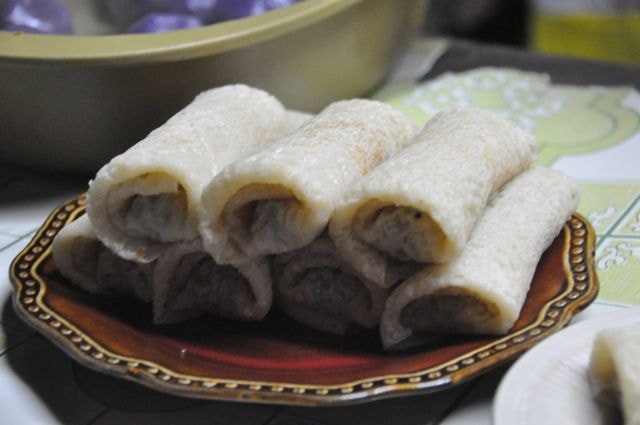
Image source: http://jelliymice.blogspot.com/2016/05/favorite-filipino-delicacy.html
3. Daral
Coconut-Filled Crepe Rolls
Daral is Mindanao’s answer to crepes. The crepe itself is made from a batter of unsweetened ground sticky rice and coconut milk, cooked into a thin sheet.
This wrapper is then filled with bukayo – caramelized grated coconut meat, which gives a luscious coconut caramel sauce vibe.
The roll is soft, with the filling providing a chewy, sugary contrast. It’s typically made for special occasions or as a festive breakfast/dessert item.
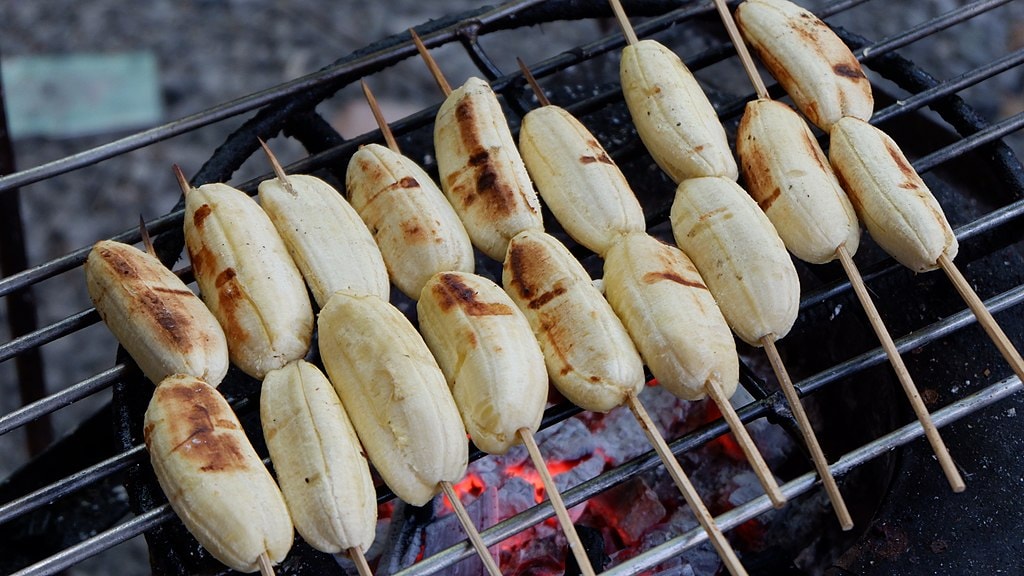
Image source: https://commons.wikimedia.org/wiki/File:Ginanggang_grilled_banana.jpg
4. Ginanggang
Mindanao’s Version of Banana Cue
There’s nothing quite like the sight of caramel-coated bananas glistening on a stick to make any Filipino smile.
Originating from the island’s Cebuano-speaking communities, ginanggang starts with saba bananas that are skewered whole on sticks and grilled over charcoal – a local cuisine answer to banana cue’s frying.
Ginanggang is served hot, straight off the grill, making it a comforting treat and affordable food on rainy afternoons.
It is commonly sold in Mindanao’s night markets and roadside stalls, especially in Davao and Cagayan de Oro. In fact, ginanggang is so tied to Mindanao that it’s noted to have originated there, unlike banana cue which is ubiquitous nationwide.
Many locals will tell you this popular street food is a nostalgic taste of childhood, perfect for an afternoon snack too.
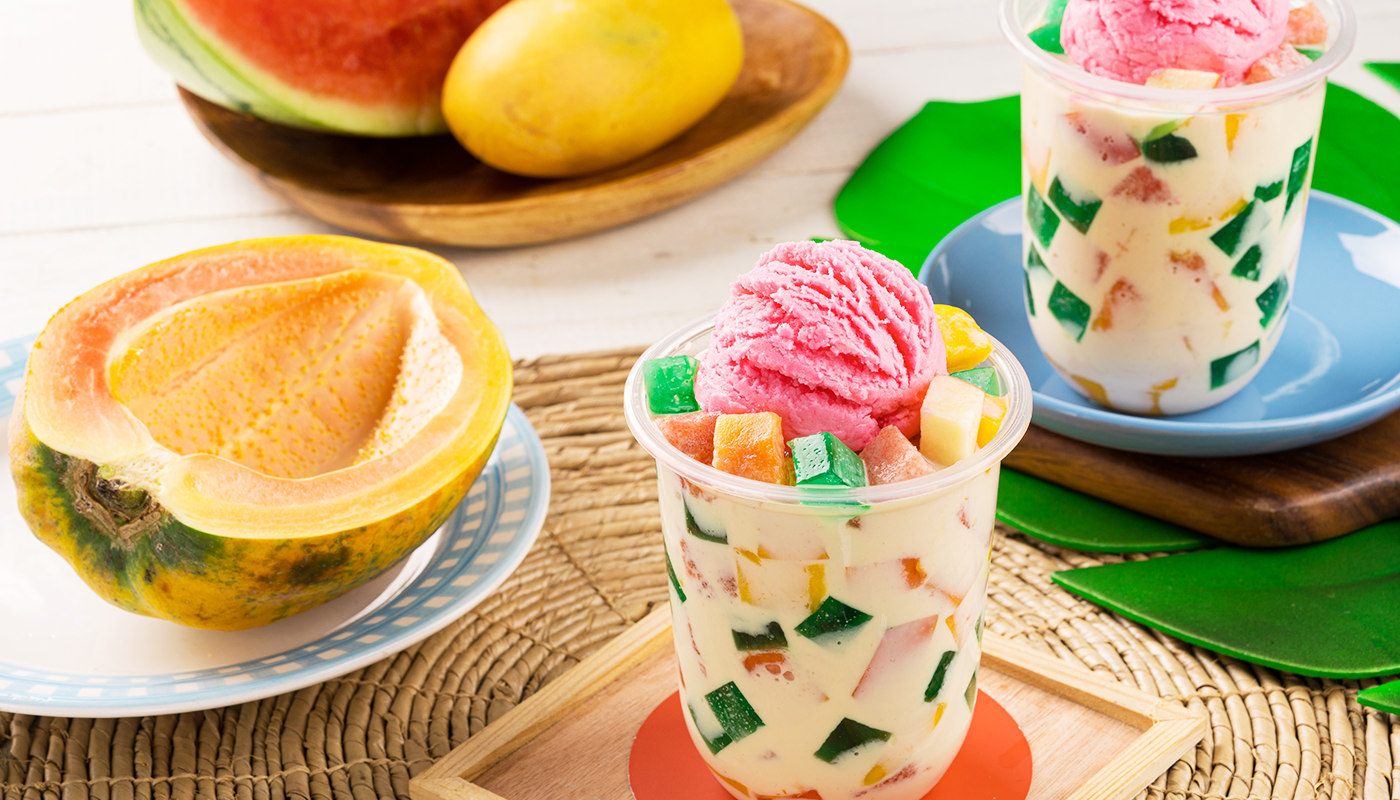
Image source: https://kitchenangel.com.ph/recipes/knicker-bocker/
5. Knickerbocker (Ice Cream Parfait)
Zamboanga’s Take on Halo-Halo
On the western tip of Mindanao lies Zamboanga City, home to the colorful Knickerbocker.
This refreshing dessert is often described as a “fruitier take on halo-halo with all the tropical flavors you can ask for” – imagine a parfait of fresh tropical fruits and gelatin, lavishly crowned with ice cream.
What makes this treat distinct from the classic version of halo-halo or iskrambol, a famous dessert topped with powdered milk, is that it isn’t made primarily of shaved ice.
It also doesn’t have some of the heavier ingredients (no sweet potato or beans here) and focuses purely on fruits and jellies like tapioca pearls or nata de coco.
Served in a tall glass, a classic Knickerbocker is filled with an assortment of local fruits like ripe mangoes, watermelon cubes, bananas, and sometimes pineapple and thin slices of young buko, sago pearls and sweetened condensed milk or evaporated milk.
Though not typical of Knickerbock, you can still sometimes enjoy the classic ingredients you can find in halo-halo like leche flan, purple yam and a generous topping of grated cheese.
The medley is then served cold with a generous serving of ice-cold milk poured in, and finally topped with ice cream – traditionally a heaping scoop of homemade strawberry ice cream.
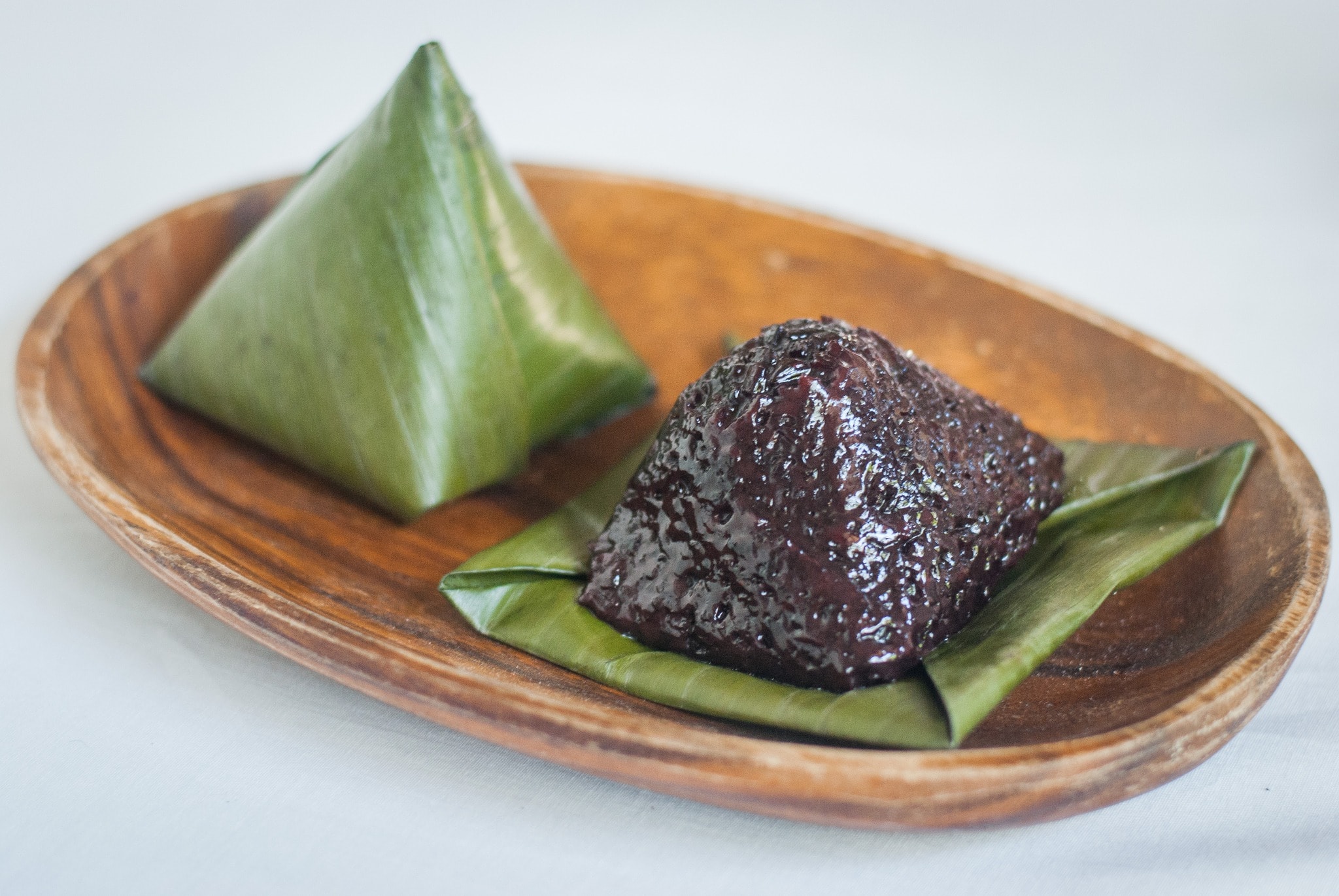
Image source: https://www.facebook.com/DennisCoffeeExpress?locale=ms_MY
6. Wadjit
Sticky Rice Delight in Coconut Cream
Wadjit is Mindanao’s version of biko – a sticky rice cake. This Filipino dessert is made by slowly cooking glutinous rice in coconut milk and sugar until the grains turn soft, sticky, and sweet.
Traditionally, both white and black glutinous rice may be combined, giving the dish a speckled dark appearance.
Once the rice is fully cooked and sweetened (but not overly, as some recipes caution not to make it too sweet), it’s often topped or mixed with bits of coconut or even jackfruit for extra flavor.
Wadjit is usually served as a slab or cut into squares, sometimes lined or wrapped in banana leaves for aroma or steamed in bamboo tubes. It has a chewy, hearty texture that is very filling – truly a treat for those who love sticky rice desserts.
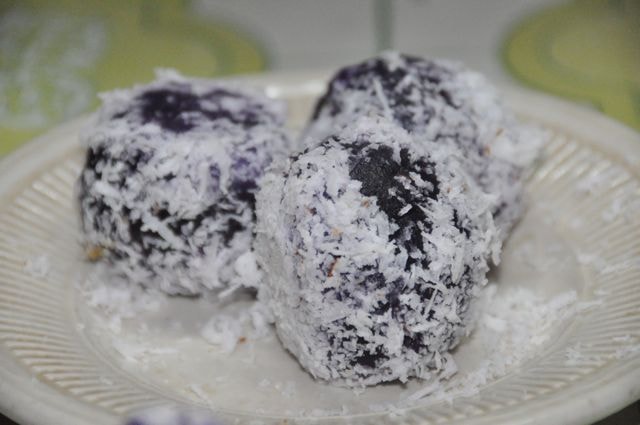
Image source: https://pastilandmaguindanaondelicacies.wordpress.com/2016/10/12/betengan/
7. Betengan
Sticky Rice Dumplings with Sugar Filling
Betengan is a must have Maguindanaon delicacy. This is like the Filipino version of Japan’s popular dessert, mochi or Filipino palitaw, but with a twist.
It’s essentially a ball of glutinous rice dough with a sweet surprise inside. Betengan dough is made from rice flour (ground sticky rice, locally called pulot) – sometimes a mix of white and black varieties for color – and water, formed into round dumplings. Inside each dumpling is a chunk of raw sugar cane or muscovado sugar.
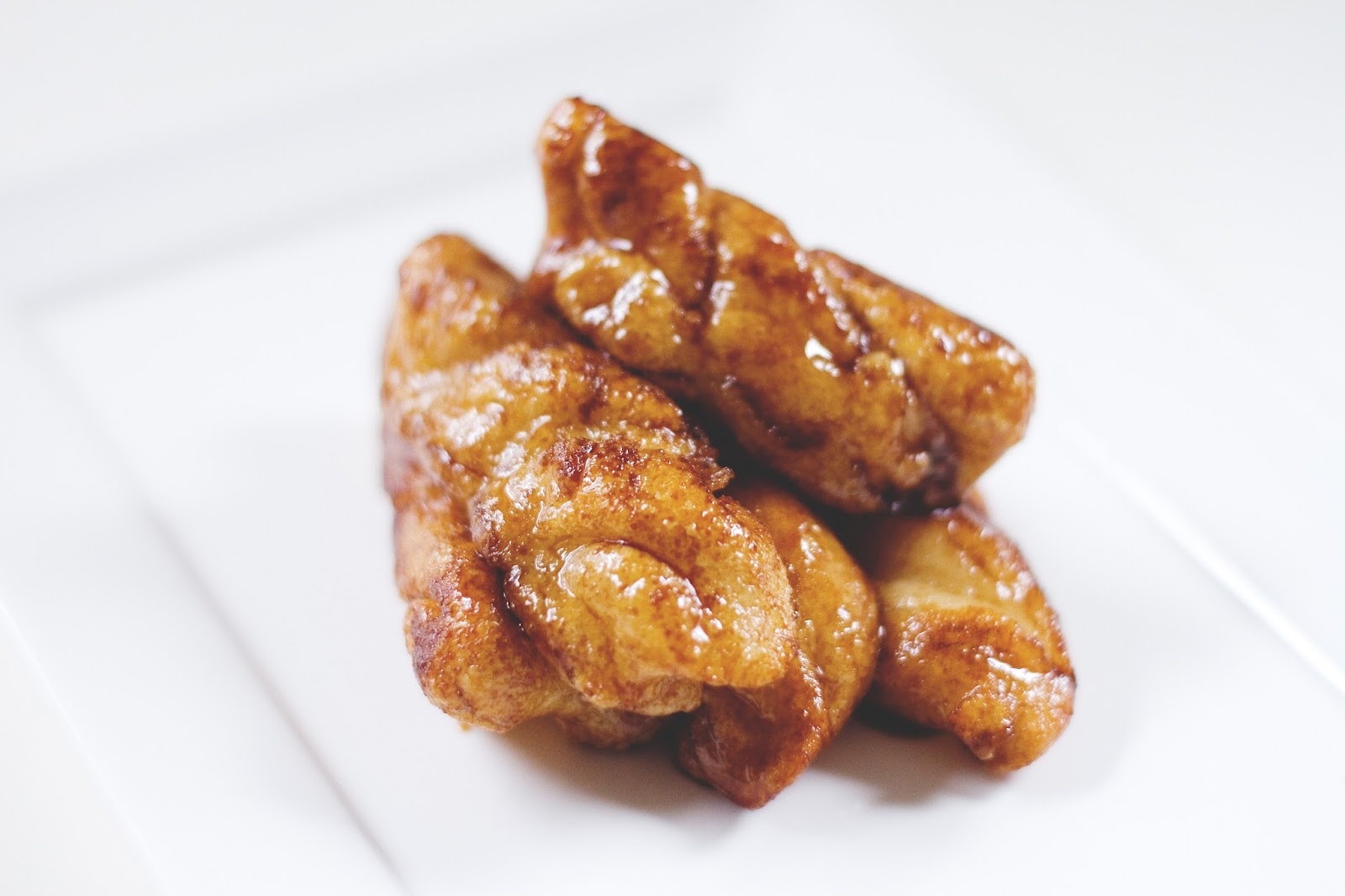
Image source: http://shortandsweetdesserts.blogspot.com/2015/10/tsikalang.html
8. Chicalang (Tsikalang)
Caramel-Glazed Fried Rice Dough
Chicalang (also spelled tsikalang) is a crunchy-on-the-outside, chewy-on-the-inside treat made from glutinous rice dough. Imagine a traditional donut crossed with sticky rice cake, coated in a sweet glaze.
The dough is shaped either into short ropes that are twisted (resembling cinnamon rolls or the Filipino “pinilipit”), or into oval patties. These are then deep-fried in oil.
Here’s the exciting part: as the dough fries, it may puff or even pop (cooks often cover the pan to avoid splatters!). Once fried to a light brown, the pieces are tossed in a pan of caramelized sugar until well coated.
The finished chicalang is golden brown and shiny with a brittle caramelized brown sugar shell. Biting into it, you get a satisfying crackle from the caramel and a dense, chewy center of sweet rice.
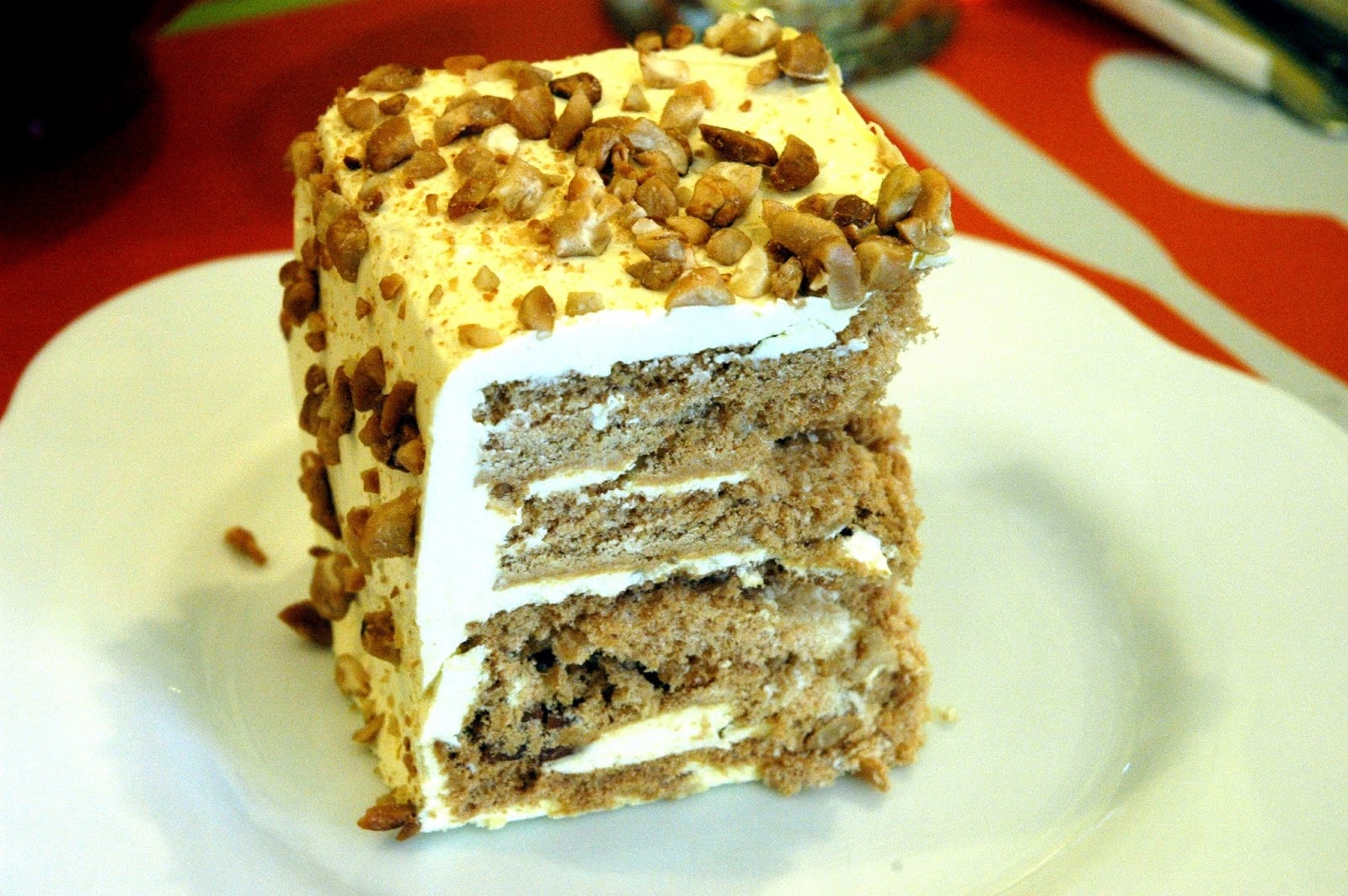
Image source: http://dude4food.blogspot.com/2013/09/flavors-of-davao-lachis.html
9. Durian Sans Rival
Must-Try Layered Cake of Davao City
Sans rival is a Filipino classic meringue cake (layers of cashew meringue with buttercream, similar to a French dacquoise). Davao’s twist is, of course, adding durian.
The durian sans rival features wafers of cashew meringue slathered with durian-infused buttercream and often topped with more chopped nuts.
Even those who aren’t huge fans of durian find themselves reaching for another slice, as the flavor is seamlessly integrated. If you’re exploring durian desserts, this one lets you taste durian in a more refined form.
In Davao City, many cafes sell durian sans rival by the slice or whole cake – it’s perfect for special occasions like the Christmas season or pasalubong (gifts) to take back home. One bite and you’ll agree it stands “without rival” among cakes.
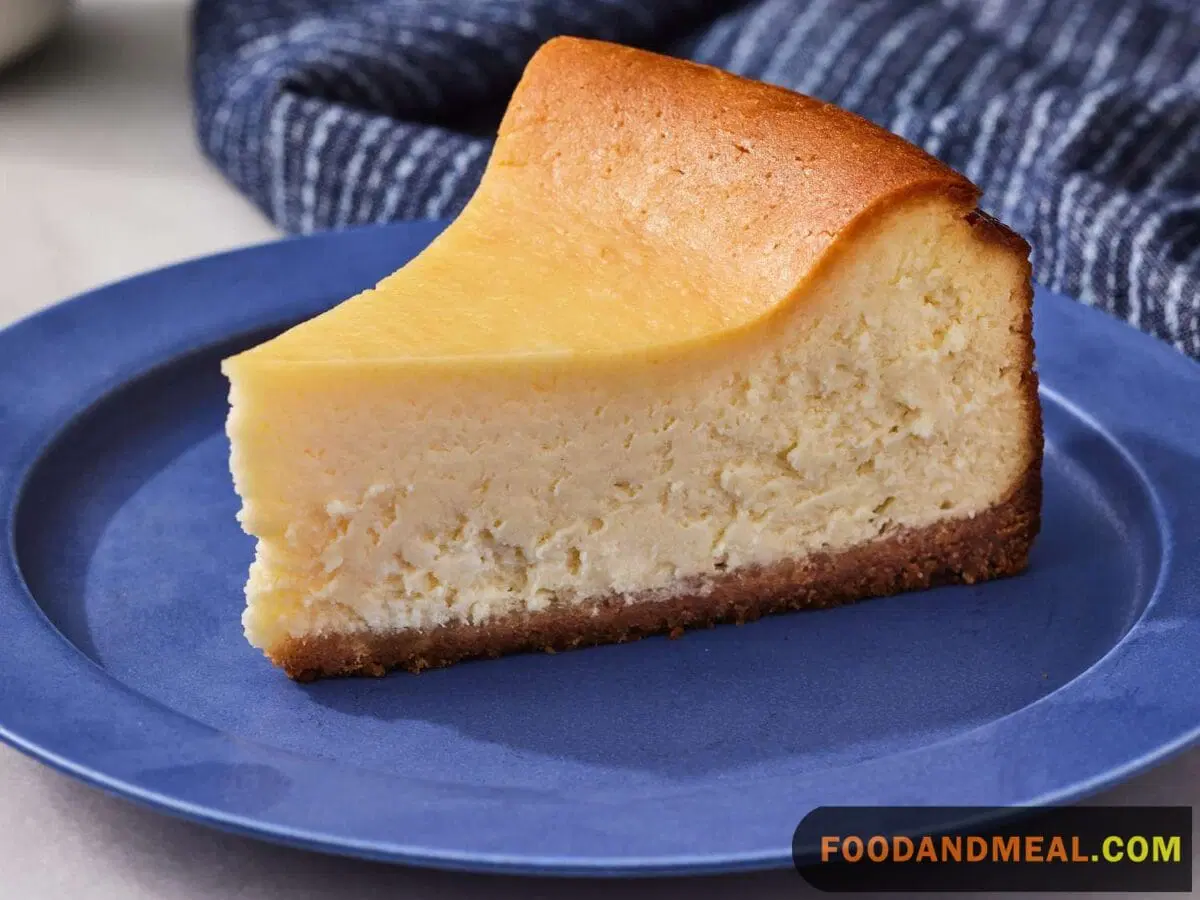
Image source: https://foodandmeal.com/davao-city-durian-cheesecake
10. Durian Cheesecake
Not One of Your Typical Filipino Dishes
Far from your local cuisine like taho (silken tofu), cassava cake or maja blanca, Durian cheesecake takes a Western favorite and infuses it with local character.
Typically, it’s a classic cream cheese-based cake blended with real durian puree, on a graham or cashew crust. The result is a smooth, dense cheesecake that smells unmistakably of durian but tastes divine.
A slice offers a creamy dessert with the tangy sweetness of cheesecake, followed by the lingering tropical fruit note of durian.
For those concerned about the strong smell of durian, you’ll be happy to know that the baking process seems to subdue the odor while preserving the fruity flavor, resulting in an absolutely delicious cake.
This popular Filipino dessert exemplifies how Davao’s Filipino restaurants and cafes innovate with local produce – turning the polarizing durian into a crowd-pleaser.
Pair a slice of durian cheesecake with a cup of coffee after dinner time, and you’ll experience pure bliss.

Conclusion: Savoring Mindanao’s Best Filipino Desserts
What makes Mindanao’s desserts stand out is how local ingredients take center stage – be it the humble sticky rice in wadjit and betengan or the kingly durian in Davao’s confections.
They are a testament to Filipino ingenuity: simple ingredients transformed into sweet treats for the sweet tooth that can rival any fancy chocolate torte in terms of flavor and satisfaction.
So, on your next food trip to Mindanao, seek out these Filipino desserts. You’ll not only satisfy your sweet tooth but also gain a deeper appreciation of Mindanao’s rich culinary tapestry.
In a country known for its hospitality, consider this your sweetest welcome. Enjoy every bite – each one is absolutely delicious, and a memory in the making.

Celebrate Life’s Milestones in Camella!
House and Lot & Condominium for Sale in the Philippines


